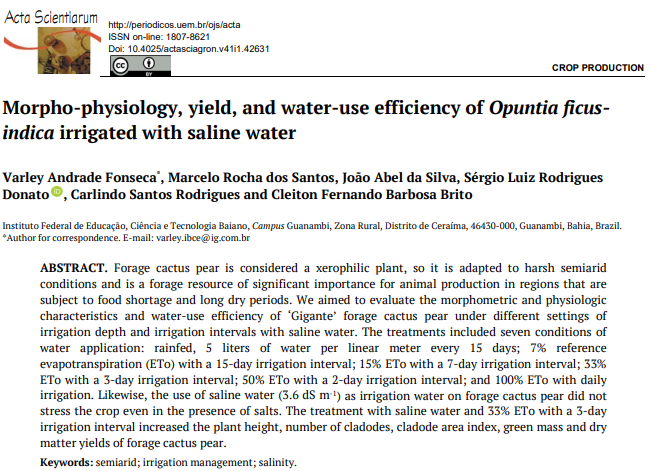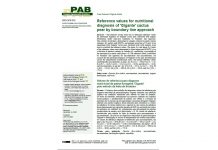Forage cactus pear is considered a xerophilic plant, so it is adapted to harsh semiarid conditions and is a forage resource of significant importance for animal production in regions that are subject to food shortage and long dry periods. We aimed to evaluate the morphometric and physiologic characteristics and water-use efficiency of ‘Gigante’ forage cactus pear under different settings of irrigation depth and irrigation intervals with saline water. The treatments included seven conditions of water application: rainfed, 5 liters of water per linear meter every 15 days; 7% reference evapotranspiration (ETo) with a 15-day irrigation interval; 15% ETo with a 7-day irrigation interval; 33% ETo with a 3-day irrigation interval; 50% ETo with a 2-day irrigation interval; and 100% ETo with daily irrigation. Likewise, the use of saline water (3.6 dS m-¹) as irrigation water on forage cactus pear did not stress the crop even in the presence of salts. The treatment with saline water and 33% ETo with a 3-day irrigation interval increased the plant height, number of cladodes, cladode area index, green mass and dry matter yields of forage cactus pear.
Keywords: semiarid; irrigation management; salinity.





